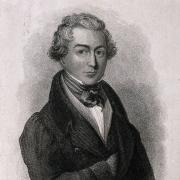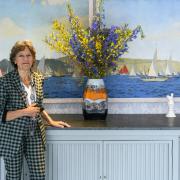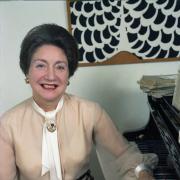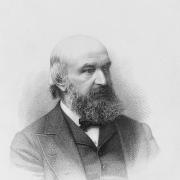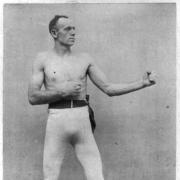A Cornish novelist and United Methodist Free Church minister, Joseph Hocking was a leading light in a family of authors and with nearly 100 novels to his name was perhaps the most notable of all
Joseph Hocking was born on November 7, 1860 (some sources erroneously offer 1855) in the quaintly named St Stephen-in-Brannel, which is around four miles west of St Austell, in mid-Cornwall. It’s one of three villages in the county dedicated to St Stephen. His father, James Hocking, was a part-owner of a tin mine, and his mother, Elizabeth née Kitto, provided him with lots of playmates. Joseph was one of seven siblings. Through his mother he was related to another figure of Cornish descent, the biblical scholar John Kitto (1804-54).

From 1878 Hocking earned his living as a land surveyor, before training for the ministry from 1881 in Manchester, then, having been ordained in 1884, Joseph became a Methodist minister for over 25 years until 1910. That Hocking chose this particular religion should not come as a surprise, as Cornwall was something of a hotbed of Methodism. By 1785 over 30% of Cornish parishes had an active Methodist presence, a community which spread dramatically such that by 1815, just 30 years later, 83% of parishes had a Methodist society. By the time of the 1851 census a higher proportion of Cornwall’s churchgoing population attended a Methodist chapel than anywhere else in the British Isles. Early in that vocation he married Annie (1887), who’d survive him. They’d have four daughters, three of whom would also become published authors, Elizabeth Nisot, Joan Shill, and the most notable of them, Anne Hocking (1889-1966), who became a crime writer and creator of Chief Superintendent William Austen. Joseph and Annie also had a son, Cuthbert, sadly killed during WW1.
Joseph’s life was itinerant as he followed his calling around the country. Having cut his teeth on short stories and serials he wrote his first novel, Harry Penhale – The Trial of his Faith whilst ministering in London in 1887, the same year he was married. You just wonder whether that book inspired the character PC Penhale in TV’s Doc Martin, which is of course set in Port Wenn.
The following year (1888) saw Gideon Strong: Plebeian published whilst From London to Damascus (1889), a travel book, showed that he was no one-trick pony. The book that brought him popular and commercial success was Jabez Easterbrook: A Religious Novel (1890). Hocking was able to combine two careers as his books gave him the opportunity to spread his message of the Christian faith, albeit a heavily Methodist one. He managed to dovetail the two contrasting yet complementary activities until he had to relinquish his pastoral duties due to ill-health. Having recovered, Hocking found a new outlet as a travelling preacher, roaming around Britain as well as the Middle East as he travelled extensively. We know Joseph was a popular preacher, attracting large congregations.

Hocking wrote several novels of a religious nature with two books, All Men Are Liars and Prodigal Daughters becoming silent movies which came out in 1919 and 1923 respectively, the latter starring the American actress, Gloria Swanson. Another of his works, The Rebel Heiress, became a BBC TV series (1958) starring Patrick Troughton. He wrote nearly 100 novels, his last trio published in 1936, shortly before his death the following year, his work extremely popular during his lifetime although he’s somewhat overlooked today.
Underpinning everything with an idealised Methodism, Hocking entertained with plots involving war and jingoistic warmongering, plus the threat of the Papacy once more infiltrating into England. During WW1 Joseph adopted a markedly pro-war stance in his writing whilst the Catholic ‘bogeyman’ needed a villain which Hocking provided in the form of the menacing Jesuit Father Anthony Ritzoom. As arch-villains go he was up there with J.R. Ewing and Moriarty.
Hocking also contributed to The Queen’s Gift Book: In Aid of Queen Mary’s Convalescent Auxiliary Hospitals for Soldiers and Sailors Who Have Lost Their Limbs in the War (1915), a book playing its part in fundraising during WW1. This was Queen Mary of Teck, the consort of George V. There were also contributions by Queen Mary herself, Arthur Balfour, who became First Lord of the Admiralty in 1915 and Foreign Secretary the following year, and famed literary luminaries such as John Galsworthy, J.M. Barrie, John Buchan, Joseph Conrad, Arthur Conan Doyle and Jerome K. Jerome. The fact he was in such exalted company tells us something about how Hocking was regarded by his contemporaries.
That he was an author of repute was also demonstrated by his inclusion in various literary reference works such as The Oxford Companion to Edwardian Fiction, The Oxford Guide to Literary Britain & Ireland and A Dictionary of Writers and their Works. He was certainly no literary slouch and was highly respected as a fiction writer.
Authoring wasn’t confined to Joseph. His elder brother, Silas Kitto Hocking (1850-1935), was also a minister who tried his hand at churning out novels, these being of a similar religious persuasion, whilst his sister, the exotically named Salome Hocking (1859-1927) was also a novelist. This really was a writing dynasty, the three siblings being among the most popular authors in this country at the turn of the 20th century. Between them they wrote over 200 novels largely for their Methodist readership, their prolific output causing some to deride their work as pulp fiction, i.e., rapidly churned out ‘stuff’ for the mass market. I rather think it was better than that.
Joseph Hocking died on March 4, 1937, in St Ives, aged 76 (although one source credits his passing to Perranporth). His ashes were buried in the churchyard in his home village of St Stephen-in-Brannel. His New York Times obituary (March 5) stated that his novels were: ‘of a simple, old-fashioned type describing the middleclass life of his day’. I guess the lad from the Cornish village did well to have his story related there. Some posthumous fame did come his way as he was one of the main characters in Surfing Tommies (2009), a play by St Austell-born dramatist Alan M. Kent who’s also written a biography of the three Hocking siblings who became writers.

CHRONOLOGY
1860 – Birth of Joseph Hocking in St Stephen-in-Brannel, Cornwall (November 7).
1884 – Joseph Hocking ordained as a Methodist minister.
1887 – Marries Annie and has his first novel published, Harry Penhale – The Trial of his Faith.
1890 – Achieves commercial and popular success with Jabez Easterbrook: A Religious Novel.
1915 – Contributes to The Queen’s Gift Book during WW1 during which he was pro-war.
1923 – The second of two films comes out based on Hocking’s books, Prodigal Daughters.
1936 – Hocking has three more novels published shortly before his death.
1937 – Death of Joseph Hocking (March 4) aged 76.
















